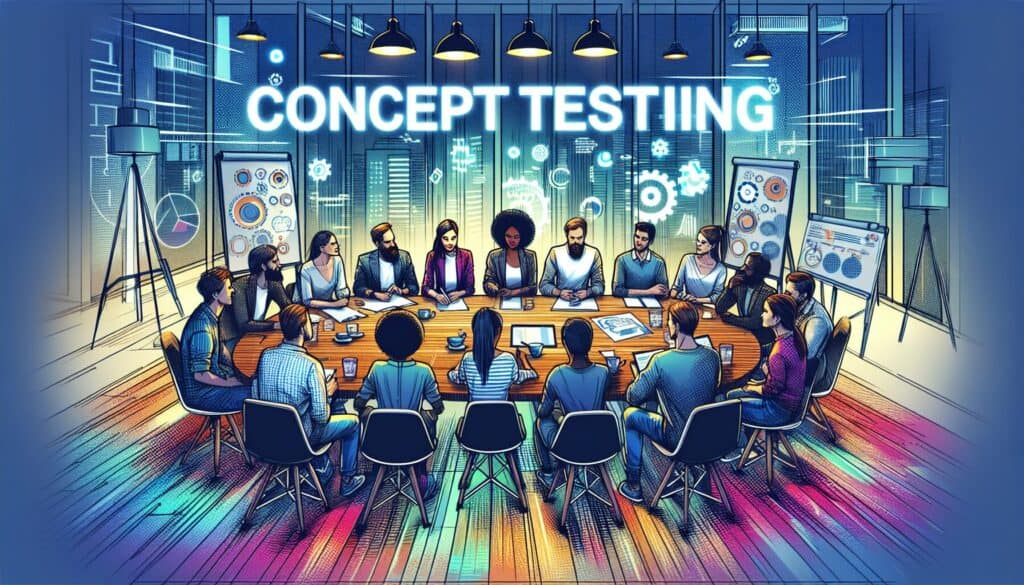To obtain early feedback on product or service ideas from the target audience before significant development investment.
- Methodologies: Engineering, Quality
Concept Testing

Concept Testing
- Agile Methodology, Customer Experience, Design Thinking, Market Research, Product Development, Product Management, Prototyping, User Testing, Validation
Objective:
How it’s used:
- Presenting a description of a new product or service concept (e.g., written description, mock-up, storyboard) to potential customers and gathering their reactions, preferences, and purchase intent.
Pros
- Helps filter out poor concepts early; provides insights for refining promising concepts; reduces risk of market failure.
Cons
- Reactions to concepts may not accurately predict actual market behavior; feedback quality depends on how well the concept is communicated.
Categories:
- Customers & Marketing, Product Design
Best for:
- Gauging customer interest and gathering feedback on new product or service ideas before development.
Concept Testing serves as a pivotal stage in the product development process, especially within industries such as consumer electronics, automotive, food and beverage, and healthcare, where understanding consumer preferences is vital. This methodology typically takes place during the early phases of product design, often after an idea has been generated but before significant resources are committed to development. Participants in this process might include product managers, marketing teams, designers, and potential users who can provide diverse perspectives. The presentation of concepts might involve various formats such as detailed descriptions, prototypes, or interactive storyboards, aimed at capturing customer reactions in realistic contexts. Insights gathered can inform decisions related to product features, design aesthetics, and pricing strategies, enhancing alignment with market demands. For example, in the tech sector, companies may use concept testing to evaluate new gadget designs or software functionalities before iterations are launched into development. By validating preliminary ideas and refining them based on consumer feedback, organizations can significantly reduce the likelihood of launching products that fail to meet market needs, thereby conserving resources and ensuring a more streamlined path to successful product releases.
Key steps of this methodology
- Define the concept to be tested, including key features and benefits.
- Select appropriate customer segments for targeted feedback.
- Create a tangible representation of the concept, such as a prototype or storyboard.
- Conduct one-on-one interviews or focus groups to present the concept.
- Ask specific questions about the concept’s appeal, usability, and value.
- Gauge customer purchase intent through direct and indirect inquiries.
- Analyze feedback to identify trends, preferences, and areas for improvement.
- Iterate on the concept based on the reactions and suggestions received.
Pro Tips
- Utilize cognitive interviewing techniques during concept testing to explore underlying motivations and reactions, leading to deeper understanding of customer preferences.
- Incorporate quantitative methods alongside qualitative feedback, such as conjoint analysis, to assess purchase intent and prioritize features with the highest value to target demographics.
- Implement iterative testing, where concepts are revised based on feedback before re-testing, allowing for continuous refinement and a more targeted final product.
To read and compare several methodologies, we recommend the
> Extensive Methodologies Repository <
together with the 400+ other methodologies.
Your comments on this methodology or additional info are welcome on the comment section below ↓ , so as any engineering-related ideas or links.
Historical Context
1949
1950
1950
1960
1960
1960
1960
1940
1950
1950
1958
1960
1960
1960
1960
(if date is unknown or not relevant, e.g. "fluid mechanics", a rounded estimation of its notable emergence is provided)















Related Posts
Musculoskeletal Discomfort Questionnaires
Multivariate Testing (MVT)
Multiple Regression Analysis
Motion Capture Systems
MoSCoW Method
Mood’s Median Test